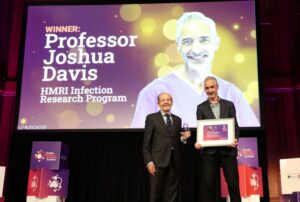
In 1966, a groundbreaking study in Dallas revealed astonishing insights into the heart’s resilience. Five young, healthy men volunteered for an unusual experiment: three weeks of complete bed rest. Confined to their beds, they were prohibited from any physical activity, even simple tasks like standing or walking. This experiment, known as the Dallas Bed Rest and Training Study, aimed to understand the effects of inactivity on the cardiovascular system.
The results were startling. Within just 21 days, the participants experienced a significant decline in their cardiovascular health. Their VO₂ max, a critical measure of cardiovascular fitness, dropped by 27 percent. This decline was equivalent to aging their hearts by 30 years. Their cardiac output decreased by 26 percent, and stroke volume fell by 31 percent. Even during light physical activities, their hearts worked much harder, with increased heart rate, blood pressure, and myocardial oxygen demand.
The Reversal and Its Implications
Following the bed rest phase, the men underwent eight weeks of structured endurance training. Remarkably, their cardiovascular health not only returned to baseline but improved. Their VO₂ max increased by 45 percent, stroke volume surged by 48 percent, and cardiac output surpassed initial levels. This demonstrated that the adverse effects of inactivity were reversible through dedicated exercise.
The study had profound implications, challenging the then-prevailing medical practice of prescribing prolonged bed rest for heart attack recovery. It paved the way for cardiac rehabilitation programs, emphasizing the importance of physical activity for heart health.
Long-Term Insights: The Heart’s Memory
Thirty years later, the same men, now in their 50s, were re-evaluated by Dr. Benjamin Levine and his team at the University of Texas Southwestern Medical Center. Surprisingly, their VO₂ max had only declined by 12 percent over the decades, far less than the drastic drop during the original study. This suggested that aging, while inevitable, was less detrimental to heart health than prolonged inactivity.
When these men resumed training, albeit at a gentler pace, they regained much of their youthful cardiovascular fitness. However, as they reached their 60s, new challenges emerged, including hypertension and arrhythmias, highlighting the importance of early intervention to preserve heart plasticity.
The Modern-Day Heart Reboot
In 2018, researchers at the University of Texas Southwestern Medical Center sought to explore whether middle-aged adults could reverse cardiac aging caused by years of sedentary lifestyles. They recruited 61 healthy but inactive participants, dividing them into two groups. One group engaged in light stretching and yoga, while the other followed a structured exercise regime.
The exercise group underwent a comprehensive program, including moderate aerobic work, high-intensity intervals, long endurance sessions, and strength training. After two years, their VO₂ max increased by 18 percent, a significant improvement for middle-aged individuals. More importantly, their hearts became more elastic and youthful, with decreased left ventricular stiffness and improved stroke volume.
The exercise group saw an 18 percent increase in VO₂ max – a massive win in middle age, and a definite boost to their longevity potential.
Conversely, the control group experienced increased left ventricular stiffness and declining heart function, underscoring the necessity of regular exercise to maintain cardiovascular health.
Conclusion: The Heart’s Plasticity and the Path Forward
The findings from these studies underscore a crucial message: the heart remains remarkably adaptable, even into middle age and beyond. Regular exercise, particularly incorporating high-intensity intervals, can significantly enhance heart health and longevity. This aligns with public health guidelines recommending 150 to 180 minutes of exercise per week, supplemented by high-intensity activities.
Dr. Paul Taylor, in his book “The Hardiness Effect,” emphasizes the potential for individuals to grow from stress and live healthier lives through the right habits. By understanding and leveraging the heart’s plasticity, we can optimize our health and extend our longevity.
The research serves as a powerful reminder that it’s never too late to start prioritizing heart health. With the right interventions, we can maintain our cardiovascular resilience and enjoy a higher quality of life as we age.




